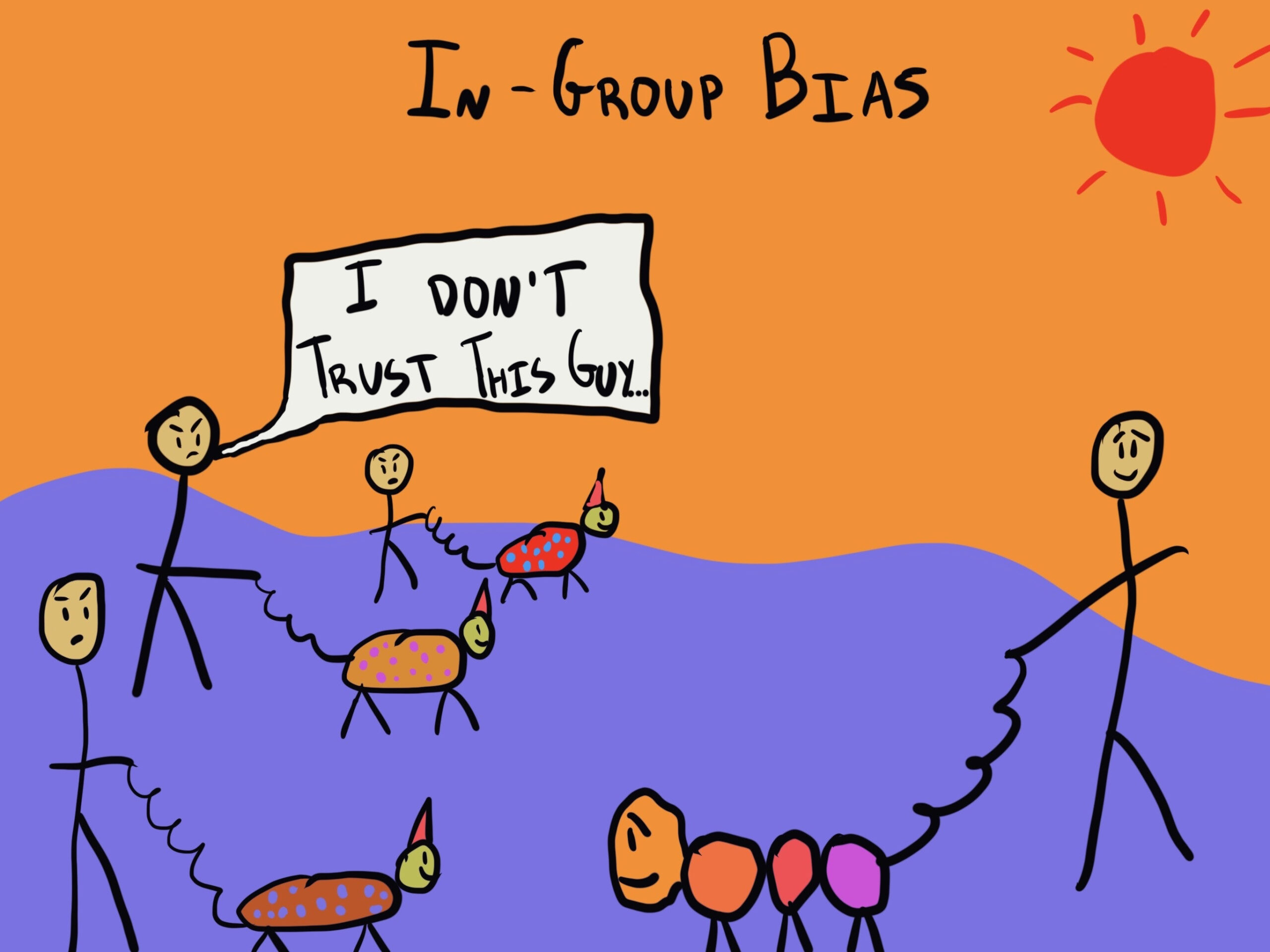In-group bias, also known as in-group favoritism, is a cognitive bias that involves individuals favoring or showing preferential treatment to members of their own group or social category while displaying bias or prejudice against individuals in out-groups. In essence, people tend to view their own group as superior, leading to discrimination or bias against those outside the group.
Explanations:
In-group bias is rooted in social psychology and is linked to concepts like identity, social cohesion, and the need for belonging. People tend to feel a stronger connection to those they perceive as part of their in-group.
Examples:
Sports Fans: Fans of a particular sports team may develop a strong bias against rival teams and their fans, often engaging in derogatory comments or behavior.
Cultural and Ethnic Bias: Prejudice and bias against individuals from different cultures or ethnic backgrounds can be a result of in-group bias.
Political Partisanship: In politics, supporters of one political party may exhibit strong bias against the opposing party, often viewing their own party’s members as more virtuous and knowledgeable.
Solutions:
Awareness: Recognize that in-group bias exists and can influence your attitudes and behavior. Self-awareness is the first step in addressing this bias.
Promote Inclusivity: Encourage inclusivity and tolerance. Actively seek to learn about and understand the perspectives of individuals from different groups.
Challenge Stereotypes: Work to challenge and break down stereotypes about out-groups. Engage with people from diverse backgrounds to gain a more comprehensive understanding.
Foster Cross-Group Relationships: Building positive relationships with people from different groups can help reduce in-group bias by humanizing individuals outside your own group.
Addressing in-group bias is essential for creating a more inclusive and equitable society, where people are valued and respected regardless of their group affiliation.
